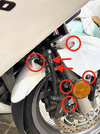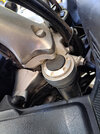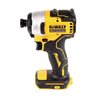Big_Jim59
Site Supporter
These projects are a lot like planning a trip. You know the destination and you plan the route and you undertake it all carefully and methodically. That is until the first leg of the journey calls for the simple removal of the front fender and you are confronted with linked brake hardware and ABS stuff. I proceed with caution.






